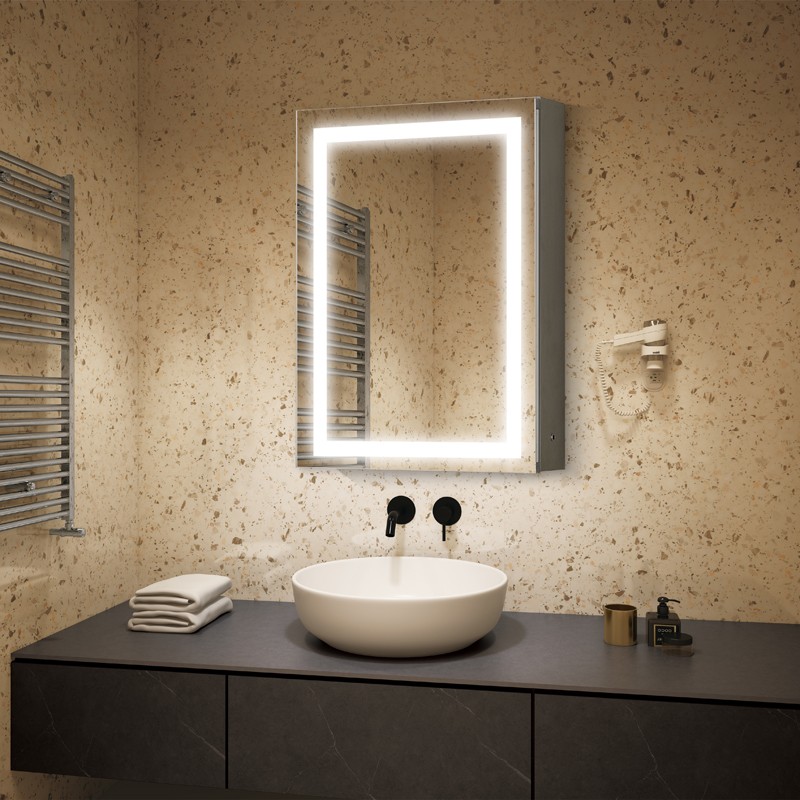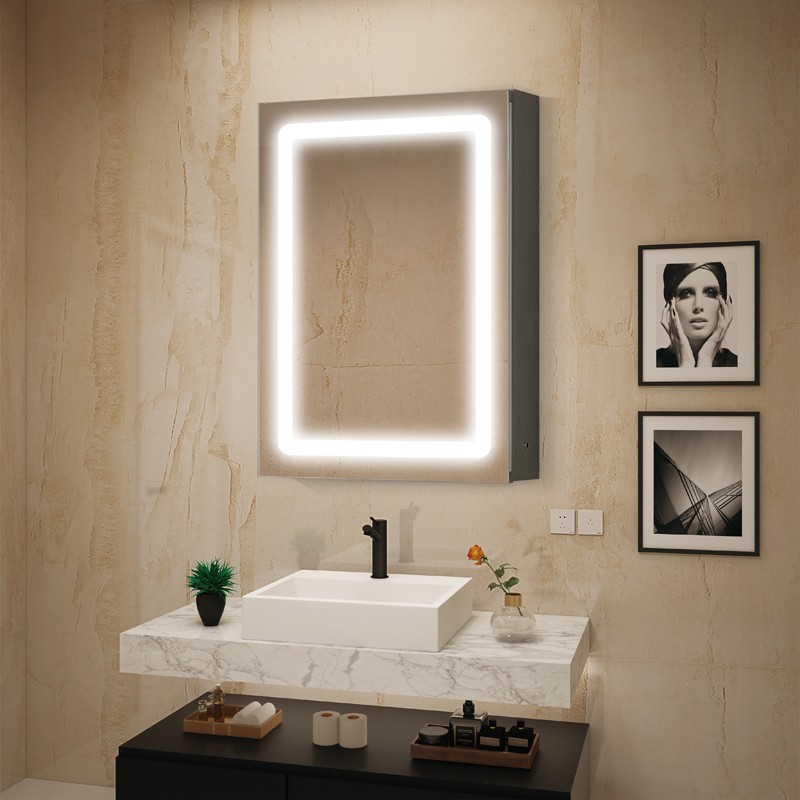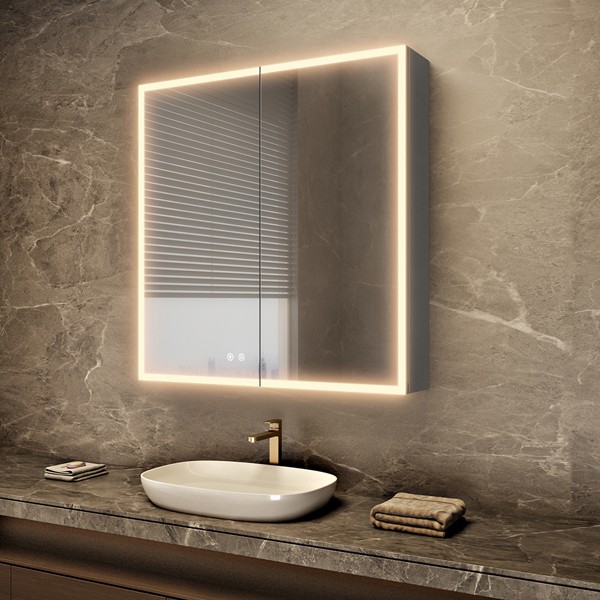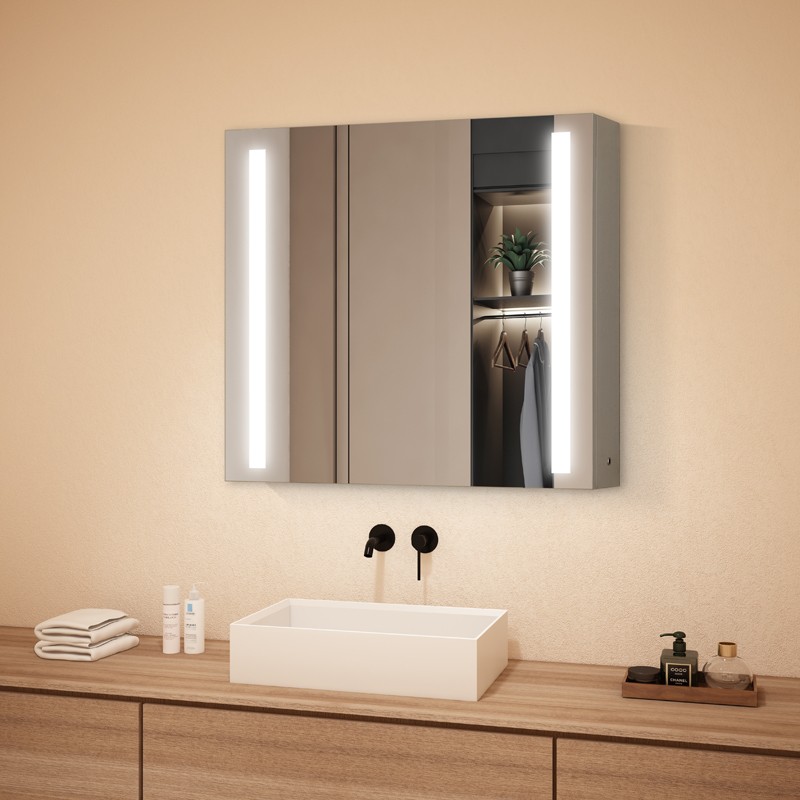Install your bathroom mirror to improve the functionality and appearance of your space. Whether you're renovating or updating, the right mirror and installation techniques will enhance the overall ambiance. Make sure to understand the process and use proper techniques to ensure a secure and well-positioned mirror that meets your needs.
Properly installing a bathroom mirror requires preparation, precise measurement, and using the right tools. The process will vary depending on the type of mirror and wall material. For instance, a frameless mirror may require a different approach compared to a framed one. It's important to ensure that the hardware is compatible with your wall, whether it's drywall, plaster, or masonry. By carefully following each step, from preparation to the final adjustments, you can achieve a sturdy and level installation.

Key Takeaways
-
The installation of your new mirror will be safe and secure with proper preparation.
-
Proper measuring and marking are essential for a balanced and centered mirror.
-
To achieve a polished and professional appearance, simply follow the step-by-step installation process provided.
Identify the Mirror Type
· Transform your space with a contemporary touch by selecting a frameless mirror. To securely mount these stylish mirrors, use specialized clips or adhesive, as they do not have a traditional frame for support.
· A framed mirror typically comes equipped with hangers or wire on the back, allowing you to easily hang it on nails or screws that are secured in the wall.
· Learn more about bathroom mirrors with this practical guide.
· To hang a mirror, you will need the following tools and items: Gather the necessary supplies.
·
|
Tool/Item |
Purpose |
|
Measuring Tape |
For precise measurements of the space and the mirror. |
|
Level |
To ensure the mirror is hung straight. |
|
Stud Finder |
To locate studs for a secure anchor. |
|
Screwdriver |
To tighten screws or secure mounting hardware. |
|
Wall Anchors (if needed) |
For additional support in drywall where no stud is present. |
Choose hardware based on your mirror's weight - either heavy with a frame, or light and frameless. Use a level to ensure straight alignment and avoid a tilted look. Use a stud finder to locate the most secure spot on the wall for hanging, especially with heavier mirrors. Use a measuring tape to accurately center the mirror over a vanity or desired space. A screwdriver may be needed for tightening screws or adjusting the mounting hardware included with the frame. If studs are not available, consider using wall anchors in the desired location.

Measuring and Marking
Measure for Proper Placement
To ensure proper placement, you must locate the mirror in relation to your vanity. Stand in front of the bathroom vanity and determine the optimal eye level. This serves as a reference point for the center of the mirror. Use a tape measure to determine the width and height of the area above the vanity where the mirror will be placed. For symmetry, align the mirror's center with the center of the sink. When selecting support fixtures, consider the weight of the mirror.
-
Measure the space above the vanity to make sure the mirror will fit, and then list the measurement.
-
Determine the eye level and desired height for the mirror, and make note of the measurement.
-
Weight Considerations: Keep in mind the weight of your mirror; heavier ones may need extra reinforcement.
Marking the Wall
After measuring, you may proceed with placement.
-
Place the level horizontally at your eye level as determined by you.
-
Create a faint pencil mark along the top of the level. This will show where the bottom of the mirror should be placed.
-
Always make sure the line is level before moving forward; this guarantees that your mirror will be straight and well-aligned.
To properly align, use the vertical alignment option.
-
Utilize the height to vertically designate the edges if your mirror is equipped with a frame or mounting brackets.
-
When hanging heavy mirrors, always locate and mark the wall studs first. This will ensure that the mountings align with the strongest supports.
Make sure to double-check that all marks are level and match the measurements you have taken. If they are even slightly off, it could result in a noticeably crooked mirror.

Installation Process
Mounting Hardware Setup
Choose appropriate mounting hardware for your mirror. If your mirror is heavy, use specially designed mounting brackets or wall anchors to securely hold the weight. For drywall, make sure to use drywall anchors.
-
Find the Studs: Utilize a stud finder to find and label the studs in the wall. If there are no studs, place wall anchors in the desired location for hanging the mirror.
-
Locate the Anchor Points: Place the mounting brackets on the wall at the desired spot and make sure they are level. Use a pencil to mark the wall at each bracket's mounting hole.
-
To ensure secure installation, drill pilot holes at the marked points for the anchors or screws.
-
Install the Anchors: If you're securing into drywall, tap the anchors into the pilot holes. In the case of directly securing into studs, the anchors are not needed.
-
Secure the brackets or other hardware to the wall using screws. Make sure to tighten everything and ensure it is level.
Securing the Mirror
Now that the hardware is set, it's time to hang the mirror.
-
Make sure your mirror is ready: Check that any hanging hardware is securely attached and aligned.
-
Position the mirror carefully against the wall, making sure to align it with the mounting hardware.
-
To properly secure the mirror, you might need to slide it onto the brackets or use clips to keep it in place. Please check that the design allows for these options. mirror is firmly secured and adjust as necessary.
Don't forget to adhere to the manufacturer's instructions for mounting hardware and the mirror itself. This will ensure a safe and level installation.

Final Touches
After successfully installing your bathroom mirror, make sure it is stable and perform a thorough clean-up and safety inspection to keep your bathroom environment clean and safe.
Ensuring Stability
To ensure that your recently installed bathroom mirror is secure, gently press it with your hands to test its stability. Make sure there is no movement and that all mounting hardware is properly tightened. For larger or heavier mirrors, consider adding bumpers to the lower corners to prevent shifting. This simple addition can provide an extra layer of protection, especially in modern bathrooms with sleek designs that may prioritize aesthetics over security.
Stability Checklist:
-
Mounting hardware is ready for secure installation.
-
During a light pressure test, the mirror should remain stationary.
-
Follow the merchant's instructions for installing larger mirrors by using the provided bumpers.
Clean Up and Safety Check
After the installation, it is important to clean up properly by sweeping and vacuuming to remove any small debris that may cause harm. Take a thorough look around the mirror, vanity, and light fixtures to ensure that no tools or materials have been left behind. Double-check for any exposed wires or sharp edges in the working area for your safety. A clean and safe bathroom will ensure that your renovation not only adds beauty but also functionality without any risks.
Safety Checklist:
-
Remove all tools and materials from the area.
-
Please make sure there are no exposed wires near the light fixture or mirror.
-
Ensure that there are no sharp edges or loose hardware that may cause harm.
Enjoy the peace of mind that comes from following these steps to securely install your bathroom mirror. Your bathroom will stay clean and safe, guaranteeing a worry-free experience.
 Shanghai Divas Glass Co.,Ltd
Shanghai Divas Glass Co.,Ltd
